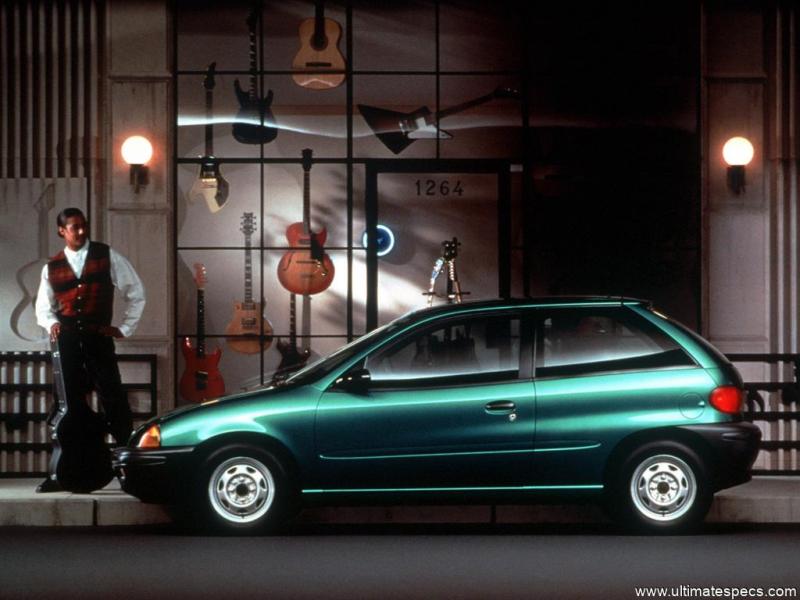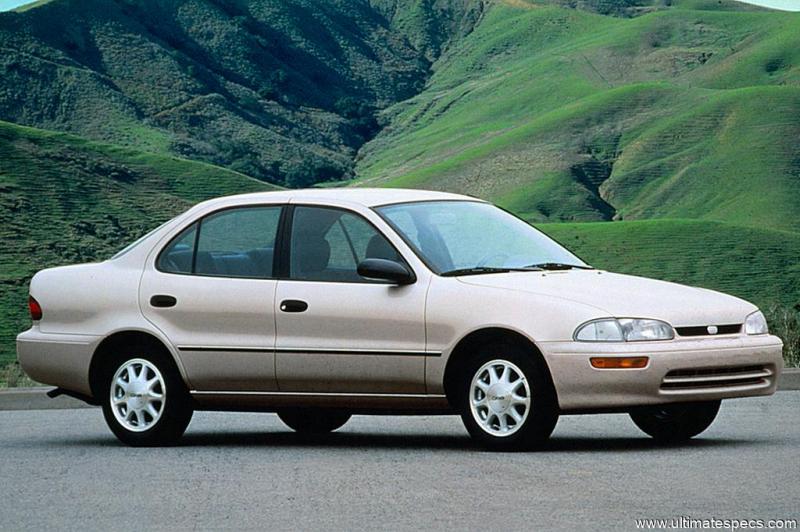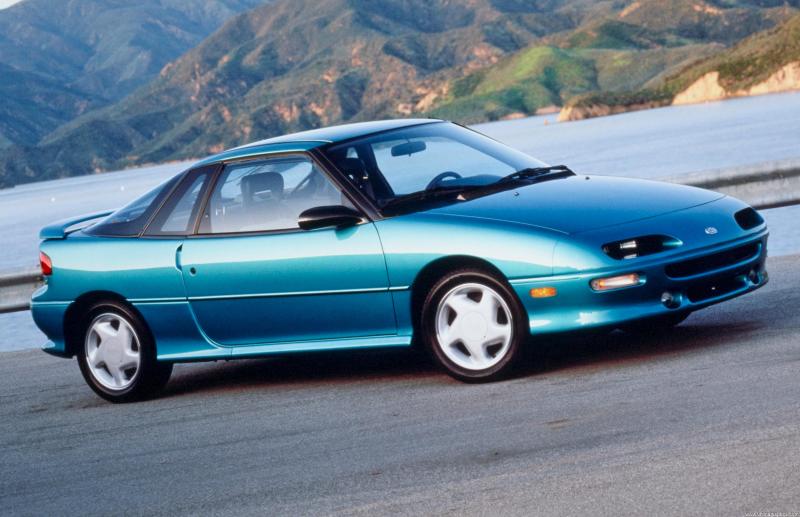How it started
Back in 1989, General Motors introduced a new brand called Geo, made up entirely of small cars which GM had never actually built.
After over two decades of attempting and failing to make a high-quality small car at a competitive price, GM partnered with Japanese brands Toyota, Suzuki, and Isuzu, by importing their cars to North America and marketing them under the Geo brand.

It was a brand of small cars and SUVs which GM hoped to make as the car for the youth during those times. Unfortunately, it only lasted nine model years, with most models later being rebadged as Chevrolet, and the brand forgot.
Geo Metro
The Metro, which replaced the Chevy Sprint, was the first Geo automobile and was based on the Suzuki Swift. It was sold as a hatchback, sedan, and even as a convertible. It was the most fuel-efficient car ever made by General Motors, and its production lasted until 2001. Out of all the Geo models, the Metro is arguably the most famous and advertised, and GM left no doubts that it was an import: "it's Japanese built, agile, quick, low priced, and the highest mileage car in America."
The Metro name wasn't entirely new in 1989, having been used on the non-turbo version of the Chevrolet Sprint in 1987. Called the Sprint Metro, the 1989 Geo Metro was essentially the same car as a Suzuki Cultus sold in Japan and the rebadged Pontiac Firefly sold in Canada. Suzuki also sold the exact vehicle under their nomenclature, the Swift. Although initially built in Japan in 1989, GM Geo production was done entirely on the North American territory by 1990.
The engine options in the Metro showed no improvement in what the predecessor Chevette had in horsepower, but mileage improved well over 50 miles per gallon. It managed this improvement thanks to having only three cylinders offered in both 1-liter and 1.3-liter variants ranging from 55 to 70 horsepower. Keep in mind the car weighed less than 1 ton or only about 1800 pounds, which should have helped acceleration, yet the 0 to 60 time was almost 15 seconds.
The Geo Prizm
The Geo Prizm was derived from a variation of the Toyota Corolla and replaced the Chevrolet Nova. Slightly larger than the Metro, the initial versions of 1989 offered five-door hatchbacks and four-door sedans. However, the sedans proved more popular, resulting in the hatchback only being sold through the end of the Prizm's first generation in 1991.

Back then, a hatchback was typically considered a lesser alternative to a sedan despite being more practical, so the Prizm sedan was considered more upscale than the Metro.
The Prizm's first-generation engine output was notable compared to the Metro, offering a 1.4-liter four-cylinder capable of 102 horsepower. The sporty GSi model of 1990–1992 was impressive for its 130 hp, twin-cam engine, sport suspension, disc brakes, and 14-inch wheels. It was a successor to the 1988 Nova twin-cam but was less of a limited edition, available in both body styles and a wide range of colors, instead of the earlier model's black sedan only.
In the LSi version by the second generation starting 1992, engine output increased to 1.8 liters, and even leather seats were an option. GM continued to sell the Prizm as a Chevrolet after the dissolution of the Geo brand in 1997, with the Prizm selling until 2003 when it was replaced by the Toyota build Pontiac Vibe.
Geo Tracker
Part of the launch of Geo in 1989 was also the Geo Tracker, a small SUV that was nearly an identical twin to the Suzuki Sidekick that was built in Ontario, Canada. The Tracker was body on frame, which allowed it to be classified as a light-duty truck. It could also be optioned with a four-wheel-drive offering a transfer case to allow two or four-wheel-drive low gearing. The convertible option put the Geo Tracker in the same fragment as a direct competitor to the Jeep Wrangler.
![]()
Powered by a Suzuki 2.6 liter 4 cylinder, it wasn't fast with its 80 horsepower, but its off-road suspension left no doubts regarding its purpose. Unfortunately, the Tracker had only one generation during its entire production under the Geo brand, and it was sold as either a two-door convertible or a hardtop.
The Geo and later the Chevrolet nameplate helped separate it from the Suzuki brand, which some consumers may have associated with its more criticized model, the Samurai, considered unsafe during high-speed lane changes.
In 1998, under the nameplate Chevrolet, the Tracker started its second generation as a rebadged Suzuki Vitara instead of a Sidekick. This new Tracker was more rounded and more car-like in shape and the off-road attributes removed, which made it less exciting and less desirable.
The Geo Storm
It was the shortest-lived Geo, launching in 1990, and was the replacement for Geo Spectrum.
The Storm was based on the Isuzu Impulse, although Isuzu sold a version of the Storm in Japan known as the Gemini Coupe. The Geo Storm lacked Gemini's optional turbocharged, all-wheel drive and Lotus design suspension since it was designed to be a low-cost automobile with a sporty appearance. It was available as a two-door liftback or a hatchback, with 1.6-liter four-cylinder engines making 130 horsepower.

The upgraded GSi trim offered even more power with a 1.8-liter four-cylinder making 149 horsepower.
A unique feature of the Geo Storm was the partially concealed headlamps, very similar to a 1990 Pontiac Sunbird, but probably because of cost concerns, the headlamp doors didn't last.
Despite selling well in the US and Canada starting in 1992, the fact that Isuzu built the Storm led to its short model run of only four years. The Suzuki Impulse was doing so poorly that Isuzu discontinued it in 1993, and as a result, they also stopped building the Storm.
How it ended
The experiment ended when the Geo division could not establish a stronger identity than the brands from which its products were derived. They were not better or more competitive in price than the originals, and the dealership was done through Chevrolet.
Apparently, no one noticed Geo's disappearance after 1996. Those billions of dollars thrown at the small car market by General Motors in the 1980s, with little return for it, were yet another fine example of why that same company would go bankrupt a decade later.
|
©2024 Ultimate Specs - O site mais completo de dados técnicos de carros. Mais de 46.000 fichas técnicas de automóveis!! - Change consent - Do not share my Personal Information. -
Sobre -
Política de privacidade -
Contact US
|
